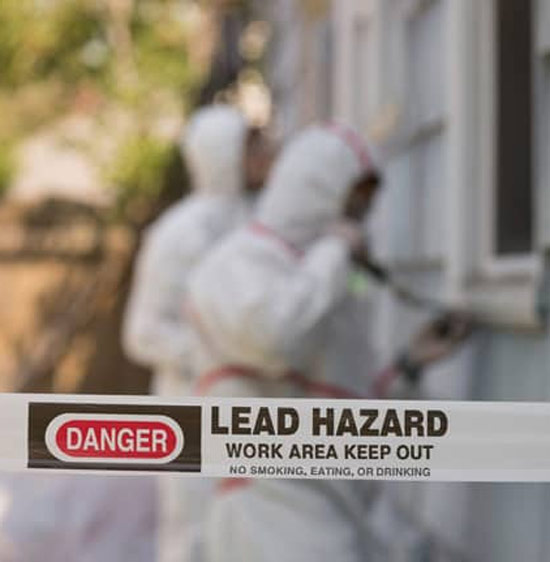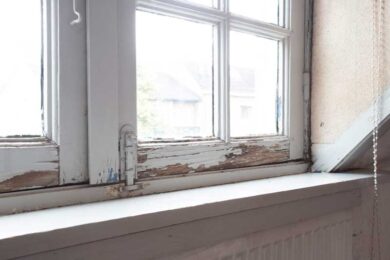NYC Lead Removal Contractors-- Get Safe and Reliable Services
NYC Lead Removal Contractors-- Get Safe and Reliable Services
Blog Article
Step-by-Step Process for Successful Lead Violation Remediation
Dealing with lead infractions requires a careful and structured approach to make sure both security and regulative conformity. The journey begins with the exact discovery and analysis of contamination sources, making use of advanced diagnostic devices. Following this, adherence to government and state laws is extremely important to formulating an efficient remediation strategy. Such a plan should information the specific techniques and timelines for activity. The actual removal calls for experienced workers to apply these strategies while purely complying with safety and security protocols. What occurs after the removal is completed? The response depends on understanding the crucial post-remediation techniques that make sure lasting safety and community well-being.

Detection and Evaluation
Discovery and evaluation are vital actions in the remediation of lead infractions. To guarantee an effective removal procedure, it is important to perform a thorough assessment of the environment where potential lead exposure exists.
This includes reviewing the degree and seriousness of contamination, as well as determining populaces at threat, specifically youngsters and expecting ladies. The gathered data need to be thoroughly documented to support the development of an effective removal method.
Additionally, it is vital to focus on areas with the highest degree of contamination and those that pose the best health risks. Reliable interaction with stakeholders, including property owners, locals, and public health and wellness authorities, is essential for guaranteeing that all celebrations are educated concerning the findings and the succeeding steps required for removal. This preliminary discovery and analysis phase prepares for an effective lead offense removal procedure.

Legal and Regulative Conformity
Navigating the landscape of lawful and regulatory conformity is a pivotal facet of successful lead offense remediation. Conformity guarantees not only the security of affected populations yet additionally the integrity and legal standing of the company responsible for remediation.
State and regional policies can differ, usually enforcing additional commitments or more rigorous requirements. For that reason, a detailed understanding of all appropriate lawful frameworks is vital. This entails meticulous paperwork of all removal activities to show compliance. Failure to abide by these guidelines can result in severe charges, including substantial fines, lawful action, and reputational damage.
Involving legal professionals concentrated on environmental regulation can facilitate navigating these complexities. Regular training and certification for all workers included in the remediation procedure are likewise necessary to make certain adherence to safety and regulatory criteria. By focusing on lawful and regulatory conformity, companies can effectively mitigate dangers and achieve an effective removal end result.
Preparation the Removal
Effectively preparing the remediation of lead offenses begins with a complete evaluation of the polluted site. This preliminary analysis must consist of a comprehensive website investigation to identify the degree and focus of lead contamination. Comprehensive sampling and laboratory analysis are paramount to create an exact contamination profile. This data-driven method makes sure that remediation initiatives are properly targeted and efficient.
When the contamination is mapped, a threat analysis need to be performed to assess potential wellness dangers to people and the environment. Lead Violation Removal in NYC. This analysis ought to think about variables such as exposure paths, population vulnerability, and ecological influences. The understandings gathered will create the basis for selecting an ideal remediation approach
Subsequently, establishing clear, attainable objectives for the remediation task is crucial. These objectives must line up with regulative criteria and stakeholder assumptions to guarantee compliance and neighborhood approval. Creating a thorough removal plan that details methods, timelines, and source allotment will help with an organized method to the clean-up process.
Moreover, it is necessary to involve with stakeholders early and preserve clear interaction throughout the preparation phase. This consists of informing local neighborhoods, acquiring required permits, and collaborating with regulative firms to ensure all lawful and step-by-step demands are satisfied. A well-crafted removal plan not just addresses official source the contamination successfully but also develops trust and participation amongst all celebrations involved.
Executing the Remediation
With a well-structured more remediation strategy in area, the focus shifts to the real execution of the remediation activities. This stage entails setting in motion the necessary resources, consisting of experienced personnel, customized devices, and top notch materials. Begin by clearly defining roles and duties to make sure liability and smooth coordination among employee.
The initial action in implementation is to protect the site. This includes establishing containment locations to protect against lead dust and debris from dispersing, as well as utilizing air filtration systems to preserve air top quality. Next off, wage the removal of lead-based materials. Make use of approaches such as damp scratching, chemical removing, or encapsulation, relying on the severity and area of the contamination. It is important to follow safety and security protocols, consisting of making use of personal protective devices (PPE) and correct disposal of dangerous materials.
Throughout the removal process, conduct regular inspections and air quality keeping track of to ensure compliance with governing standards. Reliable communication with stakeholders, consisting of homeowner and residents, is important to keep them notified of progression and any unexpected growths. By carefully following these actions, the removal tasks can be implemented effectively and successfully, eventually mitigating lead threats.
Post-Remediation Approaches
Post-remediation strategies play a critical duty in ensuring the lasting success of lead infraction remediation initiatives. These strategies include recurring surveillance, upkeep, and community education and learning to stop future lead direct exposure and guarantee a safe atmosphere.
First, routine surveillance is necessary. This includes routine screening of the formerly impacted areas to make certain that lead degrees continue to be within safe limitations. Homeowner should develop a timetable for these examinations, websites preferably in collaboration with licensed environmental professionals.

Third, educating the area plays a critical role in sustaining the advantages of remediation. Locals and building supervisors ought to be notified about the risks of lead exposure and the finest practices for preserving a lead-safe environment. Workshops, informative handouts, and community meetings can be effective tools for distributing this information.
Final Thought
Effective lead offense remediation needs a comprehensive, systematic approach encompassing discovery and assessment of contamination, adherence to lawful and governing criteria, careful planning, and efficient execution of removal efforts. Post-remediation strategies, including continuous monitoring and neighborhood education and learning, are necessary to sustain a lead-safe environment. Partnership with ecological experts makes certain ongoing compliance and security of public health and wellness. This systematic procedure emphasizes the significance of thoroughness and alertness in attending to and alleviating lead contamination.
Report this page